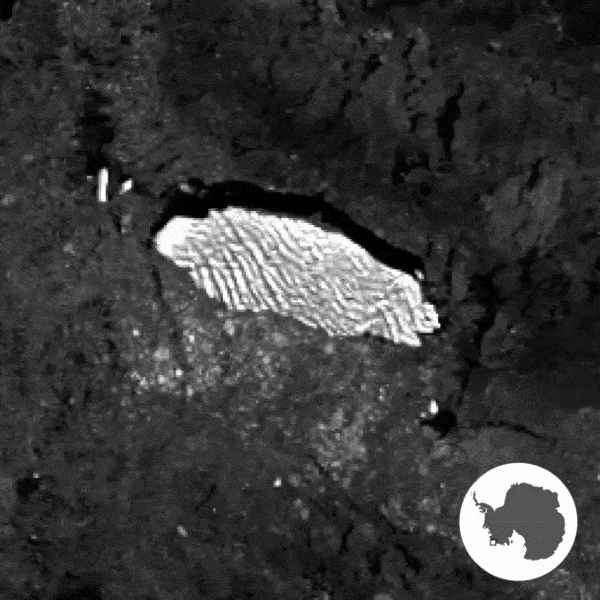Icebergs are melting fast. This AI can track them 10,000 times faster than humans

Scientists are turning to artificial intelligence to quickly spot giant icebergs in satellite images with the goal of monitoring their shrinkage over time. And unlike the conventional iceberg-tracking approach, which takes a human a few minutes to outline just one of these structures in an image, AI accomplished the same task in less than 0.01 seconds. That's 10,000 times faster.
"It is crucial to locate icebergs and monitor their extent, to quantify how much meltwater they release into the ocean," Anne Braakmann-Folgmann, lead author of a study on the results and a scientist at the University of Leeds in the U.K., said in a statement.
In late October, the British Antarctic Survey reported that massive ice sheets covering Antarctica will melt at an accelerated rate for the rest of the century, and contribute inevitably to sea level rise around the globe in the coming decades. Last year, one of the biggest icebergs known to scientists — A68a was more than 100 miles long and 30 miles wide — thawed in the South Atlantic Ocean after drifting for five years from its home in the Antarctic Peninsula, where it had broken apart in 2017.
Related:
Along with dumping 1 trillion tons of fresh water into the ocean, the melting iceberg also pumped nutrients into its environment, which will radically alter the local ecosystem for years to come, scientists have said. It's still unclear whether this change will have a positive or negative effect on the marine food chain.
Scientists monitored A68a's travels and shrinkage using images from satellites. Accurately identifying the iceberg, crucial to monitor changes to its size and shape over the years, is not an easy task, as the icebergs, sea ice and clouds are all white. Plus, although analyzing one satellite image for icebergs takes only a few minutes to complete, the time quickly adds up when thousands of images are waiting for their turn.
"In addition, the Antarctic coastline may resemble icebergs in the satellite images, so standard segmentation algorithms often select the coast too instead of just the actual iceberg," said Braakmann-Folgmann.
So to reduce this time-consuming and laborious process, researchers have, for the first time, trained a neural network to do the job.
The study team trained the AI to spot large icebergs by using images from the European Space Agency's Sentinel-1 satellite, whose radar eyes can capture Earth's surface regardless of cloud cover or lack of light.
Except for missing a few parts of icebergs bigger than the examples the AI was trained on — a solvable problem — scientists found the system managed to detect satellite image icebergs with 99 percent accuracy. This included correctly identifying seven icebergs ranging in size from 54 square kilometers (approximately the size of the city of Bern in Switzerland( to 1052 square kilometers (as large as Hong Kong.)

Related Stories:
—Satellite time-lapse shows 45-mile long iceberg colliding with Clarence Island in Antarctica
—Massive iceberg narrowly avoided collision with Antarctic ice shelf
—Watch this giant iceberg break off from Antarctica
"This study shows that machine learning will enable scientists to monitor remote and inaccessible parts of the world in almost real-time," study co-author Andrew Shepherd, who is a professor at the Northumbria University in England, said in the statement.
The AI tool also didn't make the same mistakes as other more conventional automated approaches, such as the error of misconstruing individual bits of ice as one collective iceberg, the researchers say.
"Being able to map iceberg extent automatically with enhanced speed and accuracy will enable us to observe changes in iceberg area for several giant icebergs more easily and paves the way for an operational application," said Braakmann-Folgmann.
This research is described in a paper published Thursday (Nov. 9) in the journal The Cryosphere.
